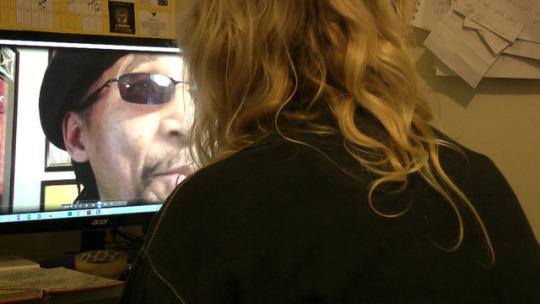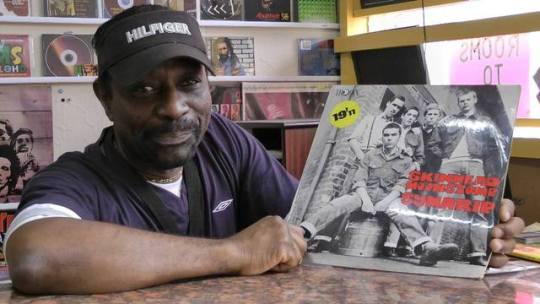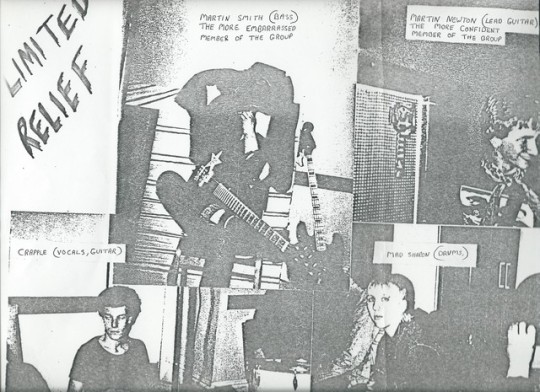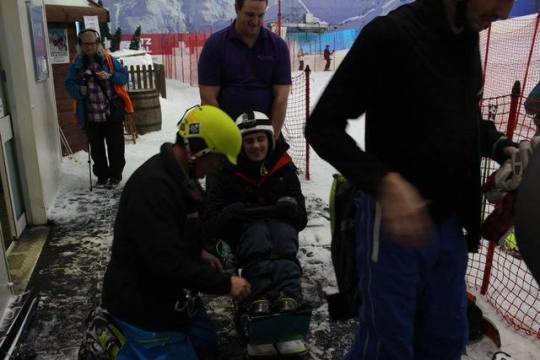#graeme watkins project
Text
Car vs Drones TCP

vimeo
The Car vs Drones film is focused on visualizing the concept of Speed and Agility set within a cinematic battle of superiority between two nimble machines, a Holden Astra and a fleet of custom-designed Quadcopter Drones. Working with Vice and The Creator’s Project from the inception definitely influenced the treatment, lending the aesthetic more to a transparent lab experiment than a hyper-polished film.
From the initial brief, they wanted all the components of the exercise revealed, from the Drone Pilots to the various Technologies on set, exposing the Lighting setups, the Camera rigs and Computer Monitors displaying each machine’s trajectory during the film. They wanted the film to be an entirely honest rendition of the experience the team went through during the filming process; and to the naked eye if a person entered the studio stage everything they would see was captured in the final film..
From a stylistic standpoint, it was a natural choice to infuse Munko’s favorite medium into the equation, the element of Illumination. Light can be interpreted over time as a lateral, striking way to show speed when captured as a long-exposure — it’s the equivalent to a motion path in an animation program, it’s how we can quantify speed and maneuverability in an easily digestible visual representation. So they outfitted every machine in the film with addressable LEDs which allowed them to play with this exciting ingredient of light painting and the ability to manipulate their motion constructs, fully exploring form and composition which paved the way to an array of seductive visuals.
These various techniques of light manipulation positioned this entire exercise more towards an art film than anything else, allowing the dramatic, abstract competition between the drones and the Astra to create a beautiful dance of light, form, color, performance and technology..
Car vs Drones Credit List
AGENCY: VICE
EDITORIAL & CREATIVE DIRECTOR: Royce Akers
ACCOUNT DIRECTOR: Georgia Field
PRODUCER: Ramona Telecican
PRODUCER: Katy Roberts
HEAD OF ACCOUNT SERVICE: Damien Miller
MANAGING DIRECTOR: Myki Slonim
AGENCY: AJF
CREATIVE DIRECTOR: Glenn Dalton
CREATIVE DIRECTOR: George Freckleton
PRODUCTION COMPANY: AIRBAG
DIRECTOR: GMUNK
EXECUTIVE PRODUCER: Robert Stock
LINE PRODUCER: Kate Merrin
CREATIVE TECHNOLOGIST: Steven Nicholson
TECH CHREOGRAPHER: Nick Wright
VFX SUPERVISOR: Travis Hogg
PROD. MANAGER: Justine Pitcher
DP: Ed Goldner
1ST AD: Eddie Thorne
CAMERA OPERATOR: Chris Child
1ST AC: Jesse Minter
2ND AC: Michelle Marchant
DATA WRANGLER: Ellery Ryan Jnr
VTR OPERATOR: Michael Gibbs
2ND UNIT DP: Travis Hogg
GAFFER: Con Mancuso
BEST BOY: Antonio Argiro
ELEX: Gene Van Dam
GRIP: Robbie Hansford
GRIP ASST: Jason Hansford
GRIP ASST: Jacko Panagiotou
SFX HAZE: Tim O’Brien
SAFETY OFFICER: Adrian Kortus
WORK EXPERIENCE: Georgia Conheady
WORK EXPERIENCE: Darcy Newton
PRECISION DRIVER: Davin Taylor
BTS DIRECTOR: Alex Watkins
BTS ASSISTANT: Ben Helweg
AERIAL CAMERA OP: Chris Lansell
DRONE PILOT: Sean “Radar” Kane
DRONE ASST: Josh Gray
BTS PHOTOGRAPHER: Mia McDonals
UNIT MGR: Richie Young
CATERING: Fringe Benefit
PRODUCTION ASST: Rob La Terra
PRODUCTION RUNNER: Dyllan Corbett
PRODUCTION RUNNER: Annelise Hickey
PRODUCTION RUNNER: Bridie Connolly
POST FACILITY: AIRBAG
EDITOR: GRAEME PEREIRA
COLORIST: CJ Dobson
MUSIC / SOUND DESIGN: Rohan Rebeiro
DRONE TEAM
DRONE CAPTAIN: Nick Jaffe
DRONE PILOT: Paul Paws
DRONE PILOT: Gavin Nash
DRONE PILOT: Alex Benn
DRONE PILOT: Tony Matulic
DRONE PILOT: Alex Doucas
DRONE PILOT: Dale Pearce
DRONE PILOT: Justin Power
DRONE PILOT: Ben Van Deventer
Likes: 1044
Viewed:
The post Car vs Drones TCP appeared first on Good Info.
0 notes
Photo









Consumer Guide / No.42 / independent film-maker Sharon Woodward with Mark Watkins.
MW: Sharon, why is promoting awareness of Ataxia-telangiectasia important?
SW: I am very lucky to be able to work in this film-making world that I love, Mark. I also feel I have some responsibility within that to explore areas and issues that are not given mainstream airtime.
With regards to this subject particularly, I wasn’t at the time aware of A-T (Ataxia-telangiectasia). I was commissioned by the CEO William Davis. He contacted me a couple of years ago with this idea about giving a voice to the individuals with the condition rather than it coming from a medical perspective.
I ended up making two short films both around 4 minutes each. With a third film being a longer 10 minute project.
The 10 minute film has been shown at the FERFILM International Film Festival (Open Air Cinema). It was broadcast in November 2016 on a number of Freeview Channels via the wonderful Community Channel. Also shown at the 23rd International Independent Film Festival, PUBLICYSTYKA, in Poland.
The social work course and the health and well-being course at Northampton University are also using the film as a resource for discussion and debate.
The condition and the manner in which it manifests is varied and only hit me at the beginning of the year. Rupert, one of the main characters interviewed in the film, speaks candidly and at length about having Ataxia-telangiectasia. Sadly he died aged 31 in January 2017. I didn't really know him : we met during filming.
Yet, when editing an interview over a long period of time you listen and watch what people say and how they say it. You start to feel like you know and understand them. I didn’t know him and I can’t possibly comprehend what it must be like to have this condition, but all these people opened my eyes and made me aware of it. I hope I never stop learning.
MW: How reflective are you as a creative person? How does this trait manifest itself when producing film projects?
SW: I think this is hard to answer. I do feel I have a responsibility as I indicated before. I do think about the world, the way we live, how we treat each other. Perhaps at times I overthink and would be wise to let go.
Growing up, I never felt in my wildest dreams I would ever be given the opportunity to make films. It was a pretty dreadful environment and I was damaged greatly by it and the experiences I had. My saving grace was going into care. I later met some wonderful people - kind, caring - and, I also received help and support. So when the film-making presented itself to me I ran at it. This was a fantastic thing to have happen and I want to at least try and make a difference by using these skills.
I am clear that I have a belief system and trust it attracts like-minded people and organizations.
If it is only about money, then quite frankly, unless you make the big time you are more likely to make a profit and earn more doing something else.
MW: What was your involvement at Tyne Tees TV?
SW: This was an incredibly long time ago now (1988/89). I had been training at the BBC in Wales (cutting rooms) outside Cardiff. This was before, and after, I graduated from Newport Film School.
It was just another Trainee/2nd Assistant Editing job. Most of us (graduates at the time) realized that we were no longer going to be offered places in the industry. Permanent jobs were giving way to short term contracts : we were all going to be freelance. I was offered a feature film (I knew the director as she was a mentor for me). The film ‘Women In Tropical Places’ was funded by the BFI (British Film Institute), Film 4 and Tyne Tees who were offering facilities and housing the production. I was taken on as a freelancer for the production. During this time I also assisted the 1st Assistant Editor in the cutting rooms with a Tyne Tees documentary.
This was not a glamorous job as you were at the bottom of the pile. I was running around after people, sharpening Chinagraph pencils, getting coffee and Twix. I did a lot of what they called rubber numbering which you had to do on film. So when you cut the clapperboard off you could keep the film in sync until it went to the Neg Cutters. So logging footage : labelling up film cans. It was a low-level position but it was fantastic for learning about putting a film together. I always say to students try and get some work experience with an editor because the learning covers everything.
MW: How did you get your first big break with Channel 4, Sharon?
SW: This was by accident, Mark. I’d been a drummer in a punk band ‘Limited Relief’ and a youth performer in a drama group ‘Teenage Zits’. All this resulted in some of us from the drama group making a video called 'Not A Girl Anymore'. Maybe now this isn't so unusual, and perhaps seen as a natural progression for youth groups? However, back then, you had three TV Channels until Channel 4 came along. Video was not the accessible technology it is today. We raised funds via The Prince’s Trust.
Back then, in the early 1980s, we had no idea. I didn't even know about editing. Just thought that you set the camera up and everything just happened including the music and credits. Very naive by today's standards. If Google had been around it would have been a case of looking it up on-line.
The film had already been shot when commissioning editor Rod Stoneman decided to take it on for the youth series.
It was filmed in 1983 ; first broadcast in 1984/85 ; and again in 1986/87 as part of the Channel 4's youth series 'Turn It Up'. The production standards are not high and Channel 4 didn't have the same set up and criteria it does today. However, I was bitten by the film-making bug and from that point on I wanted to know more.
MW: How did you come to collaborate with ska band Symarip on your new film project?
SW: I first made contact with Monty Neysmith and Roy Ellis back in 2008 when I used a song 'Skinhead Girl’ by the Symarip in a documentary I was making called ‘Thank You Skinhead Girl’. It was about teenage identity and the song was just right as the theme.
I had the idea about the Symarip story then, but put it on hold at that time. Eventually, after a number of failed attempts at interviewing anybody from the band, I revisited the idea once more in 2012 (after a brief conversation with Roy Ellis prior to a gig he was doing in the UK). The filming began at Club Ska (100 Club) in London. We recorded Roy performing with The Moonstompers. This turned out to be an amazing night, much more than I had expected as Neville Staples showed up and we captured them on stage together.
I was very fortunate to interview four of the original Symarip band members, that’s Roy Ellis and Frank Pitter (face-to-face) and Monty Neysmith and Mike Thomas (via Skype).
I also have a number of other artists as well as fans and also interviewed the late Graeme (Goody) Goodall who sadly passed away in 2014, Co-founder of Island Records & Doctor Bird.
So a wonderful documentation of history - both social and economic - as well as a film for the fans.
MW: Tell me your overall plans for 'Ska'd by the Music'... including funding / promoting...
SW: Well it is near completion. I’ve been working on it for five years and I’m aiming to finish around July/August 2017. I had no financial backing. It was a difficult project to get funding for, and therefore I’ve been making it around my commissioned film work. This means what available time I’ve had has been spent on this production. All those involved: musicians, promoters, the narrator, researchers - everybody who helped me - they all put time in because they wanted to contribute. I’m extremely grateful to all of them for supporting this project.
The technical side has been another matter i.e filming, logging, uploading, editing etc. not to mention negotiating with music publishers. This is all time consuming and labour intensive and still ongoing (by myself). So has taken over my life quite a bit. I feel incredibly lucky to have the opportunity to take this story out to a wider audience. However, as I have already said it will be nice to have my life back.
Obviously there are somethings I have to fundraise for. I can’t clear the publishing rights of the music or get DVD duplications processed without money. So I will be crowdfunding. This will enable me to raise funding to complete the project. Those that contribute and also meet certain criteria will receive a copy of the film (those interested should look out for the crowdfunding page all information and criteria will be clearly explained on the page).
The plan overall is to complete the film, first and foremost. This will be achieved by fundraising, clearing publishing rights, sorting paper work etc. The absolute date is still to be confirmed. However, I would say the end of this year at the latest. On release of the film copies will be sent to the funders/donators to the crowdfunding page, they will receive a limited edition of the DVD.
I will set up a Facebook page for ‘Ska’d by the music’, so that those interested can follow what is happening. The film will be entered into film festivals so dates of screenings will be posted so interested audiences will be aware of when and where it is being shown.
Distributors - Concord Media (they distribute other work of mine) are an educational ‘Not for Profit’ organisation, so I’m expecting that they will be interested in distribution. The Community Channel is also interested so a possible UK broadcast as well.
Synopsis: Ska’d by the music (Symarip story)
The creators of the ‘Skinhead Moonstomp’ album. The Jamaican band that engaged a generation of working class teenagers.
They were known as The Bees, Seven Letters, the Pyramids and Zubaba. In 1969 they would head straight into the British music charts with a Ska anthem to be remembered.
Not the first group of black musicians to appeal to a predominantly white audience. But this was different; Symarip were appealing to council estate kids.
Following the Nationality Act in 1948, many Jamaicans migrated to Britain in the hope of finding work. The outcome is well documented and not all found the country as welcoming as they had been led to believe.
However, leading into the mid to late 1960s, through working alongside each other in factories and visiting the same dance halls and clubs, white working class teenagers saw their own alienation and lack of opportunities, echoed in the young Jamaican counterparts.
MW: What sorts of ska / two-tone treasures can be found in your own record collection?
SW: Originally a lot of my records were on vinyl and like many of my generation I have the ‘One Step Beyond’… and The Specials, The Selecter, Bad Manners, The Beat as well as ‘The Dance Craze – The Best of British Ska...Live!’ album. Much of this has also been purchased on CD and downloads as well.
You will also find Prince Buster, Dandy Livingstone, Desmond Dekker, The Pioneers and of course, Symarip. I do love the originals and many of the covers. What a brilliant first album UB40 created with ‘Signing Off’. However, you can’t compete with Tony Tribe singing ‘Red Red Wine’.That first guitar string, like the strings of your heart. Always sends shivers down my spine.
MW: What's the best thing you've ( a ) read ( b ) watched and ( c ) listened to recently?
SW:
A) Read – I’ve found with the ongoing and non-escaping political scene at the moment I have been sent further into the world of fantasy. I do love vampire novels and science fiction. I am now on the final book of the Deborah Harkness All Souls Trilogy ‘The Book Of Life’. I got hooked on ‘A Discovery Of Witches’ because I know many of the buildings in Oxford that she writes about in the book. The idea of this history professor being a witch amused and appealed to me. So I’m on the last book in the trilogy, but haven’t been able to read as much as I would like.
B) Watched – I’m into boxsets. I have just finished watching the final of series six ‘The Walking Dead’ and found it very disturbing. Having said that, Andrew Lincoln is truly fantastic and I also love the strong female roles such as Danai Gurira’s stunning sword swirling Michonne. If you speak of fantasy often people just think you’re a nerd. Which of course I am, but wasn’t sure about this series in the beginning, it has grown on me. My husband had originally been very keen on watching it and zombies have never been my thing. However, what has engaged me is the concept of how society, humanity could, and let’s face it, would, probably break down. I find all the characters very believable, complex and scary as hell.
The other boxset recently watched was volume three of ‘House of Cards’. Amazing performances by Kevin Spacey and Robin Wright in this tale of corruption in the political arena. You begin to wonder about art imitating life, or visa versa.
Films I watched quite recently ‘Europa, Europa’ directed by Agnieszka Holland. Based on the 1989 autobiography of Solomon Perel (he also appears in it right at the end) it’s the story of a German-Jewish boy who escaped The Holocaust by masquerading not just as a non-Jew, but as an elite "Nazi" German. It is very intense at times, but also has dark humour. One dreamlike sequence shows Stalin and Hitler dancing together.
C) Listened to – Occasionally I listen to ‘The Craig Charles Funk And Soul Show’ on BBC Radio 6 Music and ‘Elaine Paige on Sunday’ on BBC Radio 2. Otherwise, it’s Classic FM in the car but I don’t listen to much radio. I admit though that I started tuning in to ‘The Archers’ on BBC Radio 4 when they had the Helen and Rob storyline going, but I often forget!
MW: How do you see the future of film making for independent production companies such as yours?
SW: I’m a freelance individual not a Limited Production company. So fortunately I don’t have to worry about employees.
The nature of funding has changed, smaller film agencies getting moved to bigger under one roof organisations. This signals regional film-makers missing out more and more on funding. Many film-makers are moving towards crowdfunding and other ways of finding support for their projects. Also technology is constantly changing, so I think how we watch films will also impact on the film-makers themselves.
MW: Aside from 'Symarip', any other film making projects in the pipeline?
SW: I am still pushing to get ‘Ska’d by the music’ completed so will be a while before I think about another personal project. However, I’m always looking for commissioned work and have a keen interest in history so we’ll have to see what the future holds.
MW: Where can we find out more on Woodward Media?
SW:
http://sharonfilmblo1.blogspot.co.uk/
https://twitter.com/SharonWoodward
https://www.facebook.com/woodwardmediacom/
© Mark Watkins / March 2017
1 note
·
View note
Note
♪
"if you had a heart you'd see mine was torn apart,and you'd come running back to me."the graeme watkins project, you come running
0 notes
Video
vimeo
Car vs Drones TCP from GMUNK on Vimeo.
The Car vs Drones film is focused on visualizing the concept of Speed and Agility set within a cinematic battle of superiority between two nimble machines, a Holden Astra and a fleet of custom-designed Quadcopter Drones. Working with Vice and The Creator’s Project from the inception definitely influenced the treatment, lending the aesthetic more to a transparent lab experiment than a hyper-polished film.
From the initial brief, they wanted all the components of the exercise revealed, from the Drone Pilots to the various Technologies on set, exposing the Lighting setups, the Camera rigs and Computer Monitors displaying each machine’s trajectory during the film. They wanted the film to be an entirely honest rendition of the experience the team went through during the filming process; and to the naked eye if a person entered the studio stage everything they would see was captured in the final film..
From a stylistic standpoint, it was a natural choice to infuse Munko’s favorite medium into the equation, the element of Illumination. Light can be interpreted over time as a lateral, striking way to show speed when captured as a long-exposure — it’s the equivalent to a motion path in an animation program, it’s how we can quantify speed and maneuverability in an easily digestible visual representation. So they outfitted every machine in the film with addressable LEDs which allowed them to play with this exciting ingredient of light painting and the ability to manipulate their motion constructs, fully exploring form and composition which paved the way to an array of seductive visuals.
These various techniques of light manipulation positioned this entire exercise more towards an art film than anything else, allowing the dramatic, abstract competition between the drones and the Astra to create a beautiful dance of light, form, color, performance and technology..
Car vs Drones Credit List
AGENCY: VICE
EDITORIAL & CREATIVE DIRECTOR: Royce Akers
ACCOUNT DIRECTOR: Georgia Field
PRODUCER: Ramona Telecican
PRODUCER: Katy Roberts
HEAD OF ACCOUNT SERVICE: Damien Miller
MANAGING DIRECTOR: Myki Slonim
AGENCY: AJF
CREATIVE DIRECTOR: Glenn Dalton
CREATIVE DIRECTOR: George Freckleton
PRODUCTION COMPANY: AIRBAG
DIRECTOR: GMUNK
EXECUTIVE PRODUCER: Robert Stock
LINE PRODUCER: Kate Merrin
CREATIVE TECHNOLOGIST: Steven Nicholson
TECH CHREOGRAPHER: Nick Wright
VFX SUPERVISOR: Travis Hogg
PROD. MANAGER: Justine Pitcher
DP: Ed Goldner
1ST AD: Eddie Thorne
CAMERA OPERATOR: Chris Child
1ST AC: Jesse Minter
2ND AC: Michelle Marchant
DATA WRANGLER: Ellery Ryan Jnr
VTR OPERATOR: Michael Gibbs
2ND UNIT DP: Travis Hogg
GAFFER: Con Mancuso
BEST BOY: Antonio Argiro
ELEX: Gene Van Dam
GRIP: Robbie Hansford
GRIP ASST: Jason Hansford
GRIP ASST: Jacko Panagiotou
SFX HAZE: Tim O'Brien
SAFETY OFFICER: Adrian Kortus
WORK EXPERIENCE: Georgia Conheady
WORK EXPERIENCE: Darcy Newton
PRECISION DRIVER: Davin Taylor
BTS DIRECTOR: Alex Watkins
BTS ASSISTANT: Ben Helweg
AERIAL CAMERA OP: Chris Lansell
DRONE PILOT: Sean "Radar" Kane
DRONE ASST: Josh Gray
BTS PHOTOGRAPHER: Mia McDonals
UNIT MGR: Richie Young
CATERING: Fringe Benefit
PRODUCTION ASST: Rob La Terra
PRODUCTION RUNNER: Dyllan Corbett
PRODUCTION RUNNER: Annelise Hickey
PRODUCTION RUNNER: Bridie Connolly
POST FACILITY: AIRBAG
EDITOR: GRAEME PEREIRA
COLORIST: CJ Dobson
MUSIC / SOUND DESIGN: Rohan Rebeiro
DRONE TEAM
DRONE CAPTAIN: Nick Jaffe
DRONE PILOT: Paul Paws
DRONE PILOT: Gavin Nash
DRONE PILOT: Alex Benn
DRONE PILOT: Tony Matulic
DRONE PILOT: Alex Doucas
DRONE PILOT: Dale Pearce
DRONE PILOT: Justin Power
DRONE PILOT: Ben Van Deventer
0 notes
Text
Untitled Document
January 13, 2017
Bioethics, Vol. 31, #2, 2017
Biology & Philosophy, Vol. 32, #1, 2017
Hastings Center Report, Vol. 47, #1, 2017
Open Mind: Discoveries in Cognitive Science (New, Open Access)
Philosophy & Public Affairs, Vol. 44, #4, 2016
Philosophy Compass, Vol. 12, #1, 2017
Review of Policy Research, Vol. 34, #1, 2017
Bioethics, Vol. 31, #2, 2017
Special Issue: Substantiating the social value requirement for research
Editorial
Annette Rid and Seema K. Shah. Substantiating the Social Value Requirement for Research: An Introduction.
Special Issue Papers
David Wendler and Annette Rid. In Defense of a Social Value Requirement for Clinical Research.
Agomoni Ganguli-Mitra, Edward S. Dove, Graeme T. Laurie and Samuel Taylor-Alexander. Reconfiguring Social Value in Health Research Through the Lens of Liminality.
Danielle M. Wenner. The Social Value of Knowledge and the Responsiveness Requirement for International Research.
Nicola Barsdorf and Joseph Millum. The Social Value of Health Research and the Worst Off.
Rahul Nayak and Seema K. Shah. Should Social Value Obligations be Local or Global?
Elizabeth Lutge, Catherine Slack and Douglas Wassenaar. Defining and Negotiating the Social Value of Research in Public Health Facilities: Perceptions of Stakeholders in a Research-Active Province of South Africa.
Shona Kalkman, Ghislaine van Thiel, Rieke van der Graaf, Mira Zuidgeest, Iris Goetz, Diederick Grobbee and Johannes van Delden. THE Social Value of Pragmatic Trials.
Tineke A. Abma, Yolande Voskes and Guy Widdershoven. Participatory Bioethics Research and its Social Impact: The Case of Coercion Reduction in Psychiatry.
Back to Top
Biology & Philosophy, Vol. 32, #1, 2017
Editorial
Kim Sterelny. Farewell.
Original Papers
W. Ford Doolittle, Austin Booth. It's the Song, Not the Singer: An Exploration of Holobiosis and Evolutionary Theory.
Kate E. Lynch. Heritability and Casual Reasoning.
S. Andrew Inkpen. Are Humans Disturbing Conditions in Ecology?
Cédric Paternotte, Jonathan Grose. Robustness in Evolutionary Explanations: A Positive Account.
Victor J. Luque. One Equation to Rule them All: A Philosophical Analysis of the Price Equation.
Makmiller Pedroso. Inheritence by Recruitment.
Review Essay
Lachlan Douglas Walmsley. Mother Nature Kicks Back: Review of Sean B. Carroll's 2016 The Serengeti Rules.
Back to Top
Hastings Center Report, Vol. 47, #1, 2017
About the Issue
Gregory E. Kaebnick. Decisions and Authority.
Articles
Ellen M. Robinson, Wendy Cadge, Angelika A. Zollfrank, M. Cornelia Cremens and Andrew M. Courtwright. After the DNR: Surrogates Who Persist in Requesting Cardiopulmonary Resuscitation.
Jeffrey T. Berger. The Limits of Surrogates’ Moral Authority and Physician Professionalism: Can the Paradigm of Palliative Sedation Be Instructive?
Erica K. Salter. Conflating Capacity & Authority: Why We're Asking the Wrong Question in the Adolescent Decision-Making Debate.
Other Voices
Carol Bayley. Managing Conflicts between Physicians and Surrogates.
Mildred Z. Solomon. On Patient Well-being and Professional Authority.
Tia Powell and Adira Hulkower. A Good Death.
David Wendler. The Theory and Practice of Surrogate Decision-Making.
Essays
Daniel Shalev. Show Code.
Case Study
Joseph J. Fins and Samantha F. Knowlton. Care under the Influence.
Commentary
Susan Dentzer. The ACA from behind the “Veil of Ignorance”.
Mark A. Rothstein. Employer Wellness Programs Challenged in Court.
Jennifer L. Herbst. Permanent Patients: Hospital Discharge Planning Meets Housing Insecurity.
Book Review
Mark R. Mercurio. Childbearing Choices: What Helps, What Doesn't, and What You Thought You Knew.
Field Notes
Zachary E. Shapiro. Bioethics in the Law.
Back to Top
Open Mind: Discoveries in Cognitive Science (New, Open Access)
Articles
Kimberly Scott and Laura Schulz. Lookit (Part1): A New Online Platform for Developmental Research.
Kimberly Scott, Junyi Chu, Laura Schulz. Lookit (Part 2): Assessing the Viability of Online Developmental Research, Results From Three Case Studies.
Nadia Chernyak, Bertilia Y. Trieu, Tamar Kushnir. Preschoolers' Selfish Sharing Is Reduced by Prior Experience With Proportional Generosity.
Back to Top
Philosophy & Public Affairs, Vol. 44, #4, 2016
Notes on the Contributors
Articles
Johann Frick. What We Owe to Hypocrites: Contractualism and the Speaker-Relativity of Justification.
Christopher Essert. Property and Homelessness.
Back to Top
Philosophy Compass, Vol. 12, #1, 2017
Chinese Comparative Philosophy
Ludovica Gallinaro. Neo-Confucianism and Zhou Dunyi's Philosophy.
Early Modern
Margaret Watkins. ‘Slaves among Us’: The Climate and Character of Eighteenth-Century Philosophical Discussions of Slavery.
Metaphysics
Jeroen Smid. What does "Nothing Over and Above its Parts" Actually Mean?
Erica Shumener. The Metaphysics of Identity: Is Identity Fundamental?
Mind & Cognitive
Ole Koksvik. The Phenomenology of Intuition.
Naturalistic Philosophy
Kristin Andrews. Chimpanzee Mind Reading: Don't Stop Believing.
Back to Top
Review of Policy Research, Vol. 34, #1, 2017
Special Issue: Accountability, Policy and Environmental Governance
Introduction
Teresa Kramarz and Susan Park. Introduction: The Politics of Environmental Accountability.
Original Articles
Jonathan Rosenberg. More than a Question of Agency: Privatized Project Implementation, Accountabilities, and Global Environmental Governance.
Teresa Kramarz, David Cosolo and Alejandro Rossi. Judicialization of Environmental Policy and the Crisis of Democratic Accountability.
Craig A. Johnson. Holding Polluting Countries to Account for Climate Change: Is “Loss and Damage” Up to the Task?
Oscar Widerberg and Philipp Pattberg. Accountability Challenges in the Transnational Regime Complex for Climate Change.
Jonathan Kuyper, Karin Bäckstrand and Heike Schroeder. Institutional Accountability of Nonstate Actors in the UNFCCC: Exit, Voice, and Loyalty.
Cristina M. Balboa. Mission Interference: How Competition Confounds Accountability for Environmental Nongovernmental Organizations.
Book Reviews
Tor Håkon Jackson Inderberg. The Political Economy of Climate Change Adaptation. New York: Palgrave MacMillan. xi + 226 pages. ISBN 9781137496720, $105.00 hardcover. Benjamin K. Sovocool and Björn-Ola Linnér. 2015 .
Marcela López-Vallejo. A Fragmented Continent: Latin America and the Global Politics of Climate Change. Cambridge, MA: The MIT Press. vii + 274 pages. ISBN 9780262528115, $26.00 paperback. Guy Edwards and J. Timmons Roberts. 2015 .
David Sadoway. Fukushima and Beyond: Nuclear Power in a Low-Carbon World. Farnham, UK: Ashgate Publishing Limited. xi + 202 pages. ISBN 978-1-4094-5491-5, $109.95 hardcover. Christopher Hubbard. 2014.
Brandiff R. Caron. Cultural Politics and the Transatlantic Divide over GMOs. New York: Palgrave Macmillan. x + 256 pages. ISBN 9780230284579, $105.00 hardcover. Hannes R. Stephan. 2015.
Back to Top
0 notes
Audio
The Graeme Watkins Project
“Love In Abundance”
Credits: Mix
Press:
El Broide
Texx And The City
youtube
0 notes
Audio
1 note
·
View note